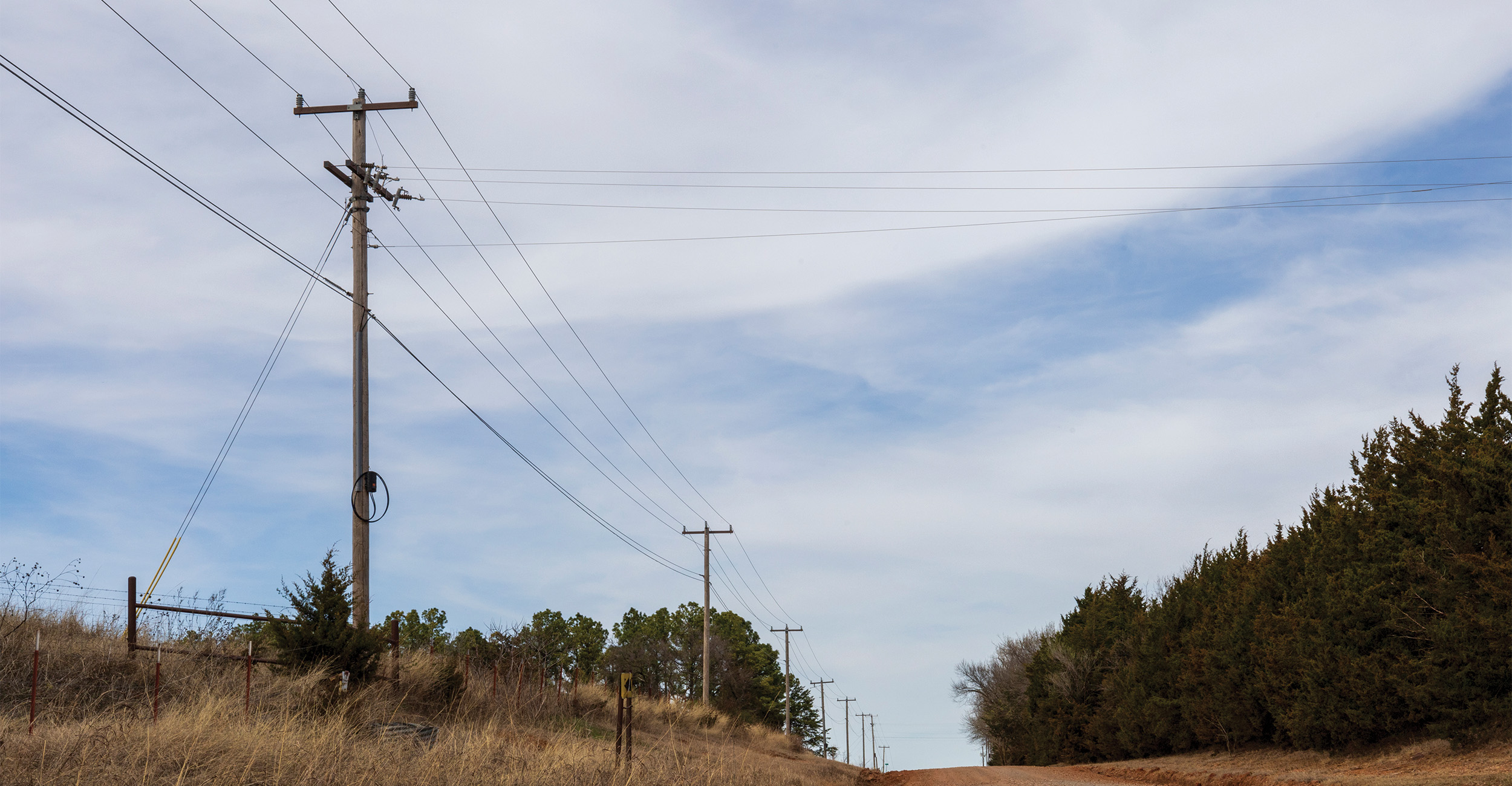
Dusty Roads to Digital Highways: Federal programs roll out $1.3 billion for broadband infrastructure
Tuesday, May 28, 2024
Media Contact: Sophia Fahleson | Digital Communications Specialist | 405-744-7063 | sophia.fahleson@okstate.edu
In 2020, people were confined to their homes, expected to keep the world turning despite a global pandemic. As Zoom calls became the new normal, lack of connectivity posed a large issue for Americans living in rural communities without high-speed internet access.
“One of the few good things that came out of the pandemic was people realizing, ‘Hey, broadband really is important, and we need to get people connected who weren’t,’” said Brian Whitacre, Oklahoma State University agricultural economics professor and chairman of the Oklahoma Broadband Expansion Council.
When people, legislators in particular, realized this need, the American Rescue Plan Act was passed, which allowed the federal government to give each state money to build the infrastructure they deem necessary, said Mike Sanders, executive director of the Oklahoma Broadband Office.
In total, Oklahoma will receive $1.3 billion for broadband expansion through three programs.
“The first program, the ARPA State and Local Fiscal Recovery Fund, amounts to $374 million,” Sanders said. “The next program is our capital projects fund, and that’s $159 million. Then, on the heels of that program is the big pot of money from the Broadband Equity, Access, and Deployment Program. That portion will be $797.4 million.”
Rural communities having broadband access also creates job opportunities for Oklahomans, Whitacre said. Companies apply for funds through the Oklahoma Broadband Office. They will use that money to not only lay the fiber for broadband but also to hire additional crews to install it. The Oklahoma Broadband Office also added positions to disperse the funds through a grant management office, Sanders said.
When Oklahoma receives its funds, the Oklahoma Broadband Office will allocate it to provide broadband access to the 600,000 unserved and underserved homes in rural Oklahoma that do not have access to high-speed internet, Sanders said.
The funds will provide broadband to Oklahomans who have less than 25 megabits per second of download speed and 3 Mbps of upload speed, which is defined as unserved, or locations with less than 100 Mbps of download speed and 20 Mbps of upload speed, which is defined as underserved.
The goal is to get these two classes to at least 100 Mbps of download speed and 100 Mbps of upload speed, if not more, said Sachin Gupta, director of government business and economic development at Centranet, a subsidiary of Central Rural Electric Cooperative in Stillwater, Oklahoma.
The process to decide where the money goes starts with the Oklahoma government surveying the current broadband infrastructure, pinpointing unserved or underserved homes, and going to broadband service providers in those areas to create a plan. State officials allocate the federal funds to these companies to put shovels in the ground and build broadband infrastructure in these rural areas, Whitacre said.
“In our state’s history, we have not had a one-time infrastructure build like this since the highway system of the 1950s and the rural electrification of the 1930s,” Sanders said.
Having access to high-speed internet at all times is the normal to many Oklahomans, but for unserved and underserved individuals in rural areas, having access is a luxury, Gupta said.
Beyond being able to work from home and use telehealth appointments, high-speed internet access allows rural community members to use their farm equipment to the highest capability, Gupta said.
“Today, John Deere sells a lot of products that are net-enabled, and farmers can’t use them because they don’t have broadband,” Gupta said. “They have combines with all these capabilities that they can’t really put to use.”
At a recent meeting of the Federal Communications Commission, a board member indicated the amount of data coming from the farm in one day from the sensors is 18 times the size of the U.S. Library of Congress, Gupta said.
Broadband access is great for rural Oklahomans, but individuals need to know how to use it, Whitacre said.
“This funding is not just for the infrastructure itself,” he said. “Part of the BEAD funds will be allocated to help people gain digital skills. OSU Extension and other land-grant organizations hope they will receive funding to allocate toward creating resources to teach people how to bank online, have a telehealth appointment, set up a simple website for a small business, and other things like that.”
Expanding the broadband infrastructure and giving rural communities access to high-speed internet will change the lives of those impacted by this initiative, Whitacre said.
Access to high-speed internet opens doors of opportunity for rural community members to get involved in the community, attend school online, start an online business for extra cash inflow, and numerous other activities they couldn’t participate in before, Sanders said.
Story by: Hadley Gregory | Cowboy Journal
